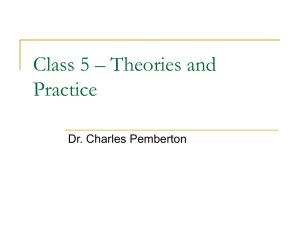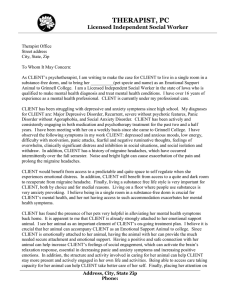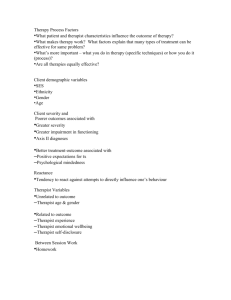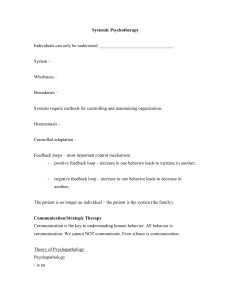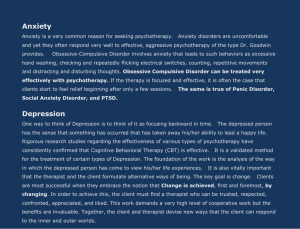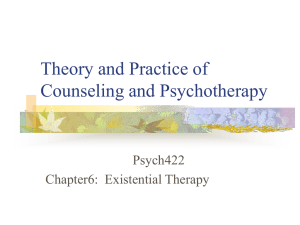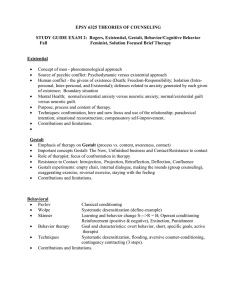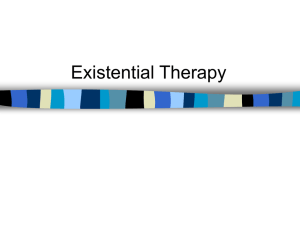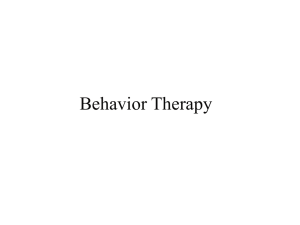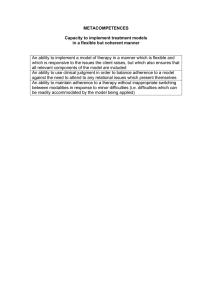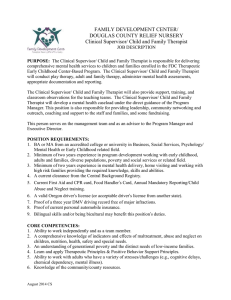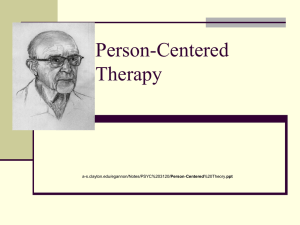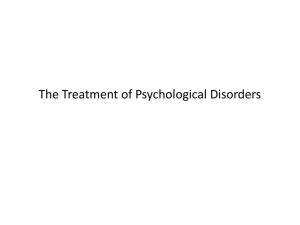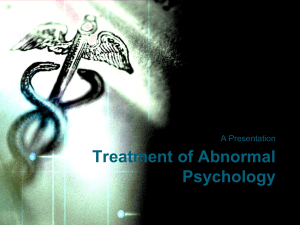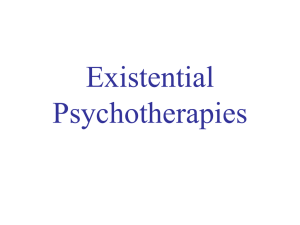Person-Centered Therapy
advertisement
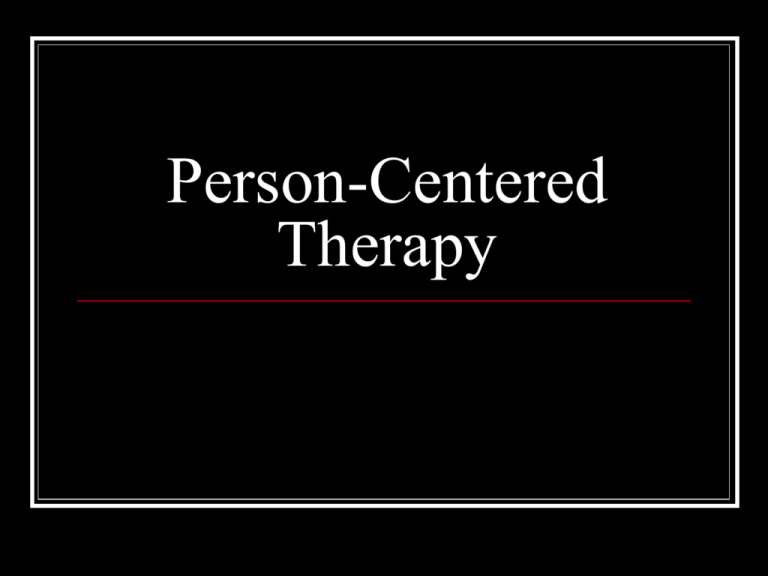
Person-Centered Therapy Person-Centered Therapy A reaction against the directive and psychoanalytic approaches Challenges: The assumption that “the counselor knows best” The validity of advice, suggestion, persuasion, teaching, diagnosis, and interpretation The belief that clients cannot understand and resolve their own problems without direct help The focus on problems over persons Person-Centered Therapy Emphasizes: Therapy as a journey shared by two fallible people The person’s innate striving for self-actualization The personal characteristics of the therapist and the quality of the therapeutic relationship The counselor’s creation of a permissive, “growth promoting” climate People are capable of self-directed growth if involved in a therapeutic relationship A Growth-Promoting Climate Congruence - genuineness or realness Unconditional positive regard- acceptance and caring, but not approval of all behavior Accurate empathic understanding – an ability to deeply grasp the client’s subjective world Helper attitudes are more important than knowledge Six Conditions(necessary and sufficient for personality changes to occur) 1. 2. 3. 4. 5. 6. Two persons are in psychological contact The first, the client, is experiencing incongruency The second person, the therapist, is congruent or integrated in the relationship The therapist experiences unconditional positive regard or real caring for the client The therapist experiences empathy for the client’s internal frame of reference and endeavors to communicate this to the client The communication to the client is, to a minimal degree, achieved The Therapist Focuses on the quality of the therapeutic relationship Serves as a model of a human being struggling toward greater realness Is genuine, integrated, and authentic, without a false front Can openly express feelings and attitudes that are present in the relationship with the client Existential Therapy Philosophical/Intellectual Approach to Therapy BASIC DIMENSIONS ~ OF THE HUMAN CONDITION The capacity for self-awareness The tension between freedom & responsibility The creation of an identity & establishing meaningful relationships The search for meaning Accepting anxiety as a condition of living The awareness of death and nonbeing The Capacity for Self-Awareness The greater our awareness, the greater our possibilities for freedom Awareness is realizing that: We are finite - time is limited We have the potential, the choice, to act or not to act Meaning is not automatic - we must seek it We are subject to loneliness, meaninglessness, emptiness, guilt, and isolation Identity and Relationship Identity is “the courage to be” ~ We must trust ourselves to search within and find our own answers Our great fear is that we will discover that there is no core, no self Relatedness ~ At their best our relationships are based on our desire for fulfillment, not our deprivation Relationships that spring from our sense of deprivation are clinging, parasitic, and symbiotic The Search for Meaning Meaning ~ like pleasure, meaning must be pursued obliquely Finding meaning in life is a by-product of a commitment to creating, loving, and working “The will to meaning” is our primary striving Life is not meaningful in itself; the individual must create and discover meaning Anxiety – A Condition of Living Existential anxiety is normal - life cannot be lived, nor can death be faced, without anxiety Anxiety can be a stimulus for growth as we become aware of and accept our freedom We can blunt our anxiety by creating the illusion that there is security in life If we have the courage to face ourselves and life we may be frightened, but we will be able to change Relationship Between Therapist and Client Therapy is a journey taken by therapist and client The person-to-person relationship is key The relationship demands that therapists be in contact with their own phenomenological world The core of the therapeutic relationship Respect, & faith in the clients’ potential to cope Sharing reactions with genuine concern & empathy
